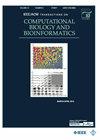Tropical Density Estimation of Phylogenetic Trees
IF 3.4
3区 生物学
Q2 BIOCHEMICAL RESEARCH METHODS
IEEE/ACM Transactions on Computational Biology and Bioinformatics
Pub Date : 2024-06-28
DOI:10.1109/TCBB.2024.3420815
引用次数: 0
Abstract
Much evidence from biological theory and empirical data indicates that, gene trees, phylogenetic trees reconstructed from different genes (loci), do not have to have exactly the same tree topologies. Such incongruence between gene trees might be caused by some “unusual” evolutionary events, such as meiotic sexual recombination in eukaryotes or horizontal transfers of genetic material in prokaryotes. However, most of the gene trees are constrained by the tree topology of the underlying species tree, that is, the phylogenetic tree depicting the evolutionary history of the set of species under consideration. In order to discover “outlying” gene trees which do not follow the “main distribution(s)” of trees, we propose to apply the “tropical metric” with the max-plus algebra from tropical geometry to a non-parametric estimation of gene trees over the space of phylogenetic trees. In this research we apply the “tropical metric,” a well-defined metric over the space of phylogenetic trees under the max-plus algebra, to non-parametric estimation of gene trees distribution over the tree space. Kernel density estimator (KDE) is one of the most popular non-parametric estimation of a distribution from a given sample, and we propose an analogue of the classical KDE in the setting of tropical geometry with the tropical metric which measures the length of an intrinsic geodesic between trees over the tree space. We estimate the probability of an observed tree by empirical frequencies of nearby trees, with the level of influence determined by the tropical metric. Then, with simulated data generated from the multispecies coalescent model, we show that the non-parametric estimation of the gene tree distribution using the tropical metric performs better than one using the Billera-Holmes-Vogtmann (BHV) metric developed by Weyenberg et al. in terms of computational times and accuracy. We then apply it to Apicomplexa data.系统发生树的热带密度估计
来自生物学理论和经验数据的大量证据表明,基因树,即由不同基因(位点)重建的系统发生树,并不一定具有完全相同的树拓扑结构。基因树之间的这种不一致性可能是由一些 "不寻常 "的进化事件造成的,如真核生物中的减数分裂性重组或原核生物中遗传物质的水平转移。然而,大多数基因树都受到底层物种树(即描述所研究物种进化历史的系统发生树)拓扑结构的限制。为了发现不遵循 "主要分布 "的 "离群 "基因树,我们建议将 "热带度量 "与热带几何中的 max-plus 代数应用于系统发生树空间上基因树的非参数估计。在这项研究中,我们将 "热带度量 "这一在系统发育树空间中定义明确的度量与 max-plus 代数结合起来,用于对基因树在树空间中的分布进行非参数估计。核密度估算器(KDE)是从给定样本中对分布进行估算的最常用的非参数估计方法之一,我们提出了在热带几何环境中使用热带度量来类比经典的 KDE,热带度量测量的是树空间中树与树之间的内在大地线的长度。我们通过附近树木的经验频率来估计观察到的树木的概率,影响程度由热带度量决定。然后,通过多物种凝聚模型产生的模拟数据,我们证明使用热带度量对基因树分布的非参数估计在计算时间和准确性方面优于使用韦恩伯格等人开发的比勒拉-霍姆斯-沃格曼(Billera-Holmes-Vogtmann,BHV)度量。然后,我们将其应用于 Apicomplexa 数据。
本文章由计算机程序翻译,如有差异,请以英文原文为准。
求助全文
约1分钟内获得全文
求助全文
来源期刊
CiteScore
7.50
自引率
6.70%
发文量
479
审稿时长
3 months
期刊介绍:
IEEE/ACM Transactions on Computational Biology and Bioinformatics emphasizes the algorithmic, mathematical, statistical and computational methods that are central in bioinformatics and computational biology; the development and testing of effective computer programs in bioinformatics; the development of biological databases; and important biological results that are obtained from the use of these methods, programs and databases; the emerging field of Systems Biology, where many forms of data are used to create a computer-based model of a complex biological system

 求助内容:
求助内容: 应助结果提醒方式:
应助结果提醒方式:


